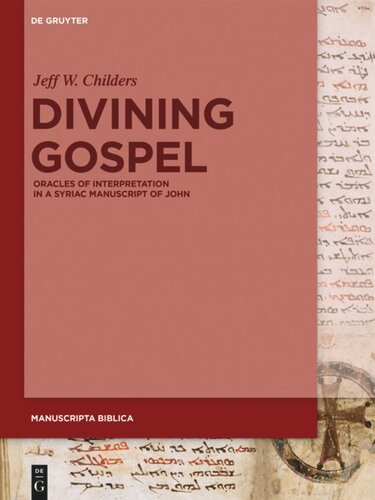

Most ebook files are in PDF format, so you can easily read them using various software such as Foxit Reader or directly on the Google Chrome browser.
Some ebook files are released by publishers in other formats such as .awz, .mobi, .epub, .fb2, etc. You may need to install specific software to read these formats on mobile/PC, such as Calibre.
Please read the tutorial at this link: https://ebookbell.com/faq
We offer FREE conversion to the popular formats you request; however, this may take some time. Therefore, right after payment, please email us, and we will try to provide the service as quickly as possible.
For some exceptional file formats or broken links (if any), please refrain from opening any disputes. Instead, email us first, and we will try to assist within a maximum of 6 hours.
EbookBell Team

4.8
104 reviewsAncient manuscripts of John’s Gospel containing hermeneiai have long puzzled scholars, provoking debate about their origins, purpose, and use. The fragmentary nature of the early evidence has impeded progress towards a better understanding of these specialized books.
The present study shows that these books are "Divining Gospels"—editions of John’s Gospel incorporating lot divination materials for use in fortune-telling. The study centers on material presented here for the first time: the text and translation of a unique sixth-century Syriac manuscript, the earliest and most complete example of a hermeneia Gospel. An analysis of the Syriac along with evidence from Greek, Coptic, Latin, and Armenian versions show they all preserve vestiges of the same apparatus, disseminated widely at an early time throughout many different Christian communities. These books must be situated squarely within the development of divinatory practices in early and late antique Christianity. However, they represent a true hermeneutic, a method by which interpreters brought the potency of the Bible to bear on the everyday concerns of people who consulted them for help.
Furthermore, the Divining Gospel draws on the special aura that John’s Gospel held in the Christian imagination, both as text and as textual object. An analysis of the interplay between the biblical text and sacred codex, the oracles, the ritual practitioner, and the client enrich our appreciation of this distinctive hermeneutic. Contextualizing these materials in popular use illuminates the fraught relationships between the ecclesial establishment, ritual experts operating on the margins of orthodox respectability, and lay clients seeking knowledge and help.